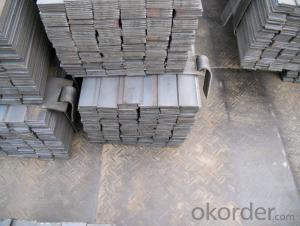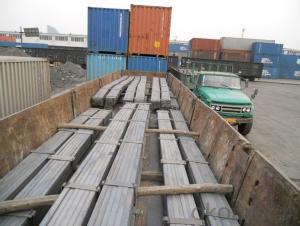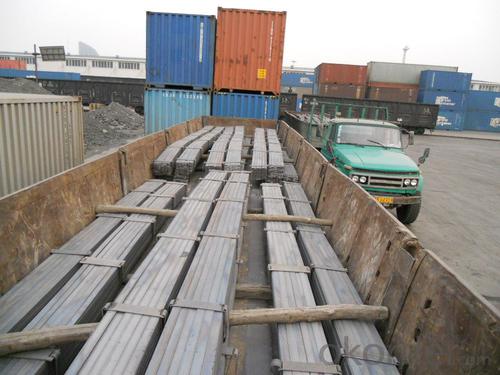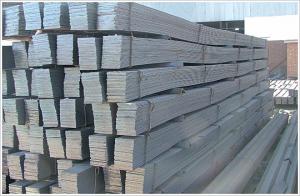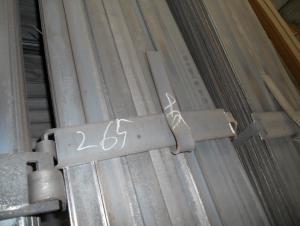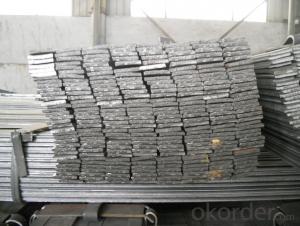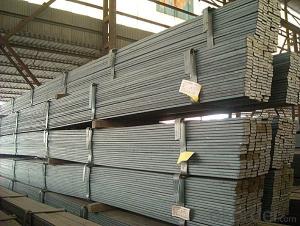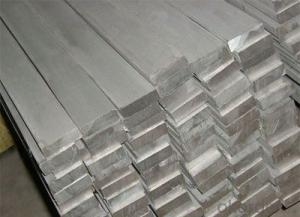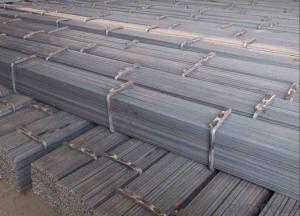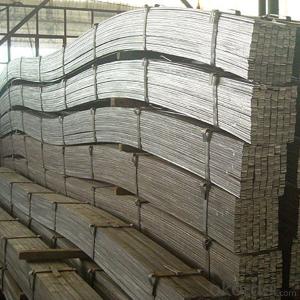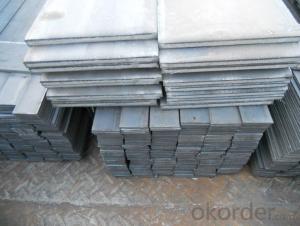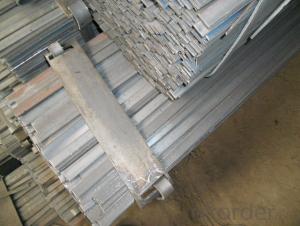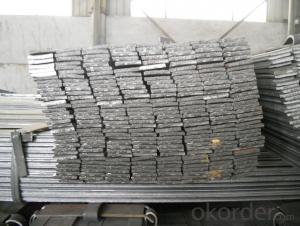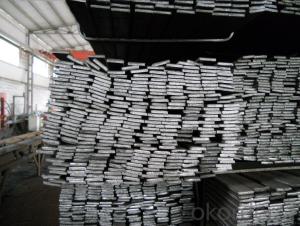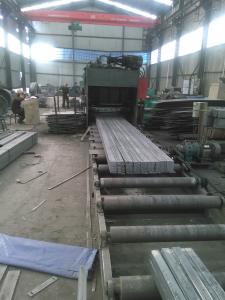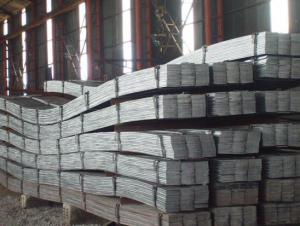GB Standard Steel Flat Bar with High Quality 30mm
- Loading Port:
- Tianjin
- Payment Terms:
- TT OR LC
- Min Order Qty:
- 25 m.t
- Supply Capability:
- 15000 m.t/month
OKorder Service Pledge
OKorder Financial Service
You Might Also Like
Product Description of GB Standard Steel Flat Bar with High Quality 30mm:
Specification of GB Standard Steel Flat Bar with High Quality 30mm:
-Standard: GB
-Material: Q235
-Length: 6m, 12m
-Size:
| Size(mm) | Mass(Kg/m) |
| 30*5 | 1.18 |
| 30*8 | 1.88 |
| 30*10 | 2.35 |
Package & Delivery of GB Standard Steel Flat Bar with High Quality 30mm:
1.The steel flat bars will be packed in bundle with steel wire at each end of every bundle and color marking in order to help the customer to recognize his goods more easily at sight.
2. And the steel flat bars could be loaded into 20ft or 40ft container, or by bulk cargo. If the weight of each bundle reaches more than 3.5 mt, the loading by break bulk cargo should be choosed. When the weight of each bundle reaches less than 3mt, the loading by container should be choosed.
3.As for the transportaion from mill to loading port, the truck will be usually used. And the maximum quantity for each truck is 40mt.
4.All in all, we could do in accordance with customer's request.
FAQ:
Q1: Why buy Materials & Equipment from OKorder.com?
A1: All products offered by OKorder.com are carefully selected from China's most reliable manufacturing enterprises. Through its ISO certifications, OKorder.com adheres to the highest standards and a commitment to supply chain safety and customer satisfaction.
Q2: How do we guarantee the quality of our products?
A2: We have established an advanced quality management system which conducts strict quality tests at every step, from raw materials to the final product. At the same time, we provide extensive follow-up service assurances as required.
Q3: How soon can we receive the product after purchase?
A3: Within three days of placing an order, we will arrange production. The shipping date is dependent upon the quatity, how many sizes you want and the plan of production, but is typically 1 month to 2 month days from the beginning of production.
Images of GB Standard Steel Flat Bar with High Quality 30mm: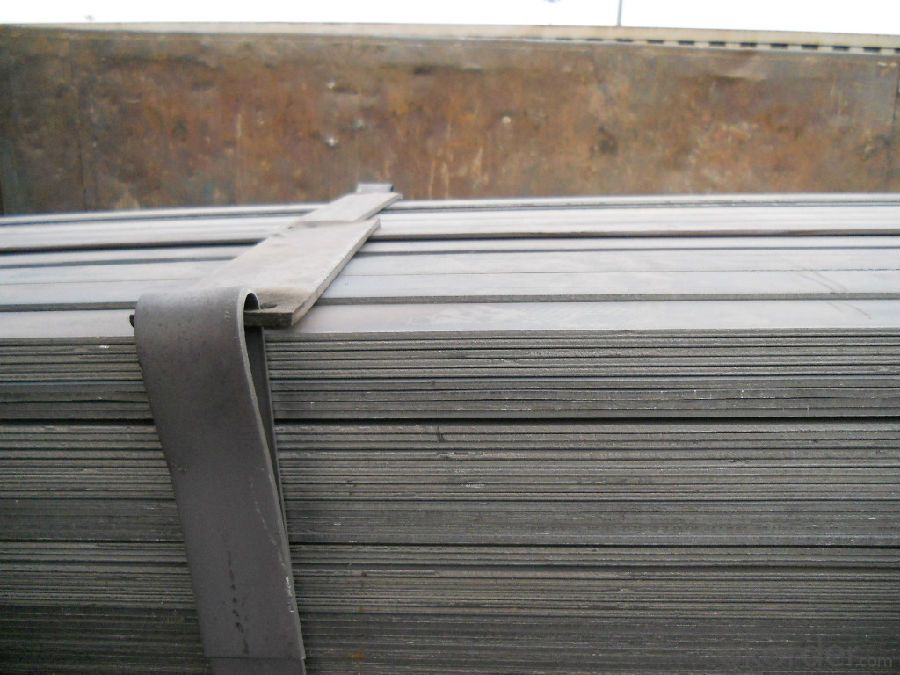
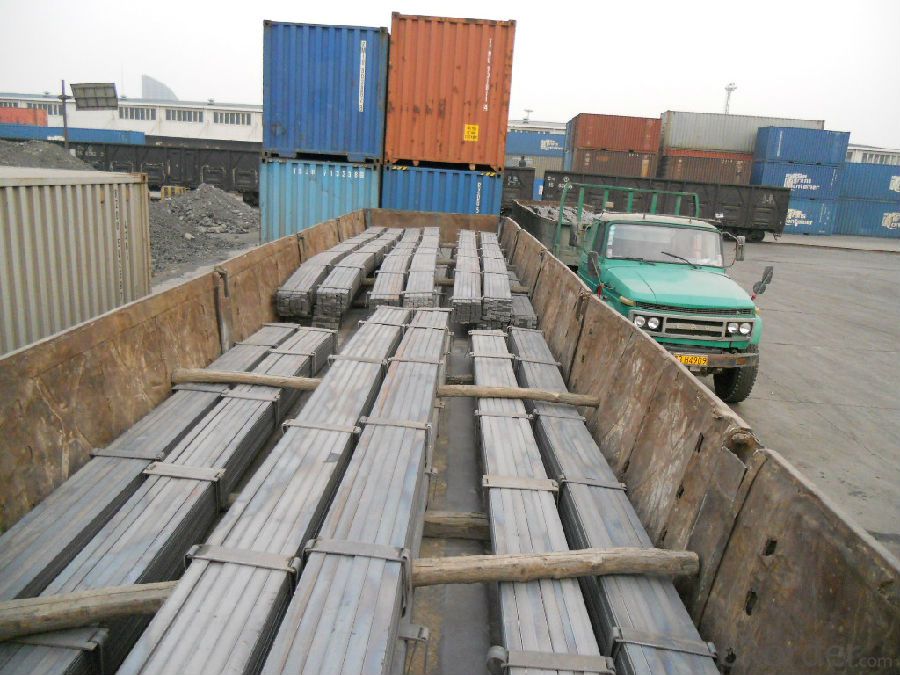
*If you would like to get our price, please inform us the size, standard/material and quantity. Thank you very much for your attention.
- Q: Are steel flat bars resistant to fire or heat?
- Fire and heat pose no threat to steel flat bars due to their high resistance. The non-combustible nature of steel ensures that it neither burns nor aids the spread of fire. Moreover, steel boasts a formidable melting point, enabling it to endure exceedingly high temperatures while preserving its structural integrity. This quality proves especially vital in contexts where fire resistance is of paramount importance, including the construction of buildings, bridges, and industrial equipment. Rigorous testing has confirmed that steel flat bars retain their strength and stability even after enduring prolonged exposure to intense heat. Consequently, steel flat bars emerge as a dependable and secure choice in environments prone to fire.
- Q: How do you prevent pitting or cracking on steel flat bars?
- There are several measures that can be taken to prevent pitting or cracking on steel flat bars: 1. Store the steel flat bars in a dry and well-ventilated area to avoid moisture exposure, which can lead to corrosion and pitting. 2. Apply a suitable protective coating, such as paint, varnish, or specialized anti-corrosion coatings, to create a barrier against moisture and other corrosive elements. 3. Clean the steel flat bars regularly to remove dirt, debris, or corrosive substances that may accumulate on the surface. Use mild detergents or safe cleaning solutions for steel. 4. Handle the steel flat bars with care to prevent impact or excessive loads that can cause cracking. Avoid dropping or mishandling the bars during storage, transportation, or installation. 5. Securely fasten the steel flat bars when moving or transporting them to prevent movement or rubbing against each other, which can result in pitting or scratching. 6. Protect the steel flat bars from extreme temperatures, especially rapid cooling or heating, as this can cause thermal stress and potential cracking. Allow the bars to acclimate gradually to temperature changes whenever possible. 7. Regularly inspect the steel flat bars to identify any signs of pitting, cracking, or corrosion. Promptly address any issues by cleaning, repairing, or applying protective coatings as necessary. By implementing these preventive measures, you can minimize the risk of pitting or cracking on steel flat bars, ensuring their longevity and preserving their structural integrity.
- Q: How do steel flat bars contribute to the overall safety of structures?
- Steel flat bars contribute to the overall safety of structures in several ways. Firstly, steel is an incredibly strong and durable material, making it suitable for withstanding heavy loads and resisting bending or warping. This strength and resilience of steel flat bars provide stability and structural integrity to buildings, bridges, and other structures. They help distribute the weight evenly and prevent excessive deflection, ensuring that structures remain safe and secure. Additionally, steel flat bars are commonly used in construction to reinforce concrete structures. By embedding steel bars within the concrete, a composite material is created that is stronger and more resistant to cracking and breaking under pressure. This reinforcement not only enhances the structural integrity of the building but also increases its resistance to natural disasters such as earthquakes or high winds. Moreover, steel flat bars are often utilized in framing systems, such as in the construction of walls, roofs, and floors. These bars act as load-bearing members by providing support and distributing the weight of the structure. This helps to prevent the collapse of the building and ensures its stability and safety, especially in areas prone to seismic activity or extreme weather conditions. Furthermore, steel flat bars offer fire resistance, which is crucial for the safety of structures. Steel is non-combustible and does not contribute to the spread of fire. It maintains its structural strength even at high temperatures, allowing occupants to evacuate safely and providing firefighters with a stable structure to work from during rescue operations. Lastly, steel flat bars are highly resistant to corrosion, which increases the lifespan of structures. Corrosion weakens the structural integrity of materials, potentially compromising the safety of the building. Steel's resistance to corrosion reduces the risk of structural failure due to rust and deterioration, ensuring the long-term safety of the structure. In conclusion, steel flat bars contribute significantly to the overall safety of structures by providing strength, stability, reinforcement, fire resistance, and corrosion resistance. Their use in construction helps prevent collapse, withstand heavy loads, resist natural disasters, and ensure the safety of occupants.
- Q: Are steel flat bars suitable for fabrication of industrial machinery?
- Yes, steel flat bars are suitable for the fabrication of industrial machinery. Steel is a highly durable and strong material, making it ideal for constructing heavy-duty machinery that can withstand the demands of industrial applications. The flat bar shape provides structural stability and versatility, allowing for easy fabrication and customization to meet specific design requirements. Additionally, steel flat bars offer excellent resistance to corrosion, which is crucial in industrial environments where machinery may come into contact with moisture or chemicals. Overall, steel flat bars are a reliable and cost-effective choice for fabricating industrial machinery.
- Q: What is the carbon content in steel flat bars?
- The carbon content in steel flat bars typically ranges from 0.2% to 0.8%, depending on the specific grade and intended application of the steel.
- Q: Can steel flat bars be used for tool and die making?
- Yes, steel flat bars can be used for tool and die making. Tool and die making requires materials that are strong, durable, and can withstand the high pressures and temperatures involved in the manufacturing process. Steel flat bars are often chosen for this purpose due to their excellent strength-to-weight ratio and resistance to wear and tear. They can be easily machined, shaped, and hardened to meet the specific requirements of the tool or die being fabricated. Additionally, steel flat bars are readily available in various sizes and grades, making them a versatile choice for tool and die making applications.
- Q: The function of ground lead out galvanized flat steel
- Use and test, debug, you must use lead line. In accordance with the D501 specification, its cross section is not less than 4*40.
- Q: Are steel flat bars used in the construction of stadiums or arenas?
- Yes, steel flat bars are commonly used in the construction of stadiums and arenas. Steel flat bars are versatile and can be used for various structural applications, including framing, support beams, and reinforcement. Due to their strength and durability, steel flat bars are often preferred in large-scale construction projects like stadiums and arenas, where they are used to provide stability and support to the structure. Additionally, steel flat bars can be easily fabricated and installed, making them an efficient choice for construction purposes.
- Q: What are the common surface treatments for steel flat bars?
- Steel flat bars can undergo various surface treatments to improve their appearance, durability, and resistance to corrosion. The most common treatments are as follows: 1. Hot-dip galvanizing immerses the bars in molten zinc, creating a protective coating that enhances their lifespan and corrosion resistance. 2. Powder coating involves applying a dry powder to the bars and heating it to create a long-lasting finish. This treatment offers a wide range of colors and excellent resistance to scratching, chipping, and fading. 3. Electroplating deposits a thin layer of metal, such as zinc, nickel, or chrome, onto the bars using electricity. It improves their appearance, corrosion resistance, and can provide a decorative finish. 4. Painting applies a layer of paint to the bars for both aesthetic appeal and protection against corrosion. Different types of paints, such as epoxy, polyurethane, and enamel, can be used depending on specific requirements. 5. Anodizing, mainly used for aluminum but can also be applied to steel flat bars, involves creating an oxide layer through electrolysis. This enhances corrosion resistance and provides a decorative finish. These surface treatments are widely used in industries like construction, automotive, manufacturing, and infrastructure projects. The choice of treatment depends on specific application requirements, such as desired aesthetics, durability, and corrosion resistance.
- Q: What are the common surface defects in steel flat bars?
- Some common surface defects in steel flat bars include: 1. Scale: This is a thin layer of oxide that forms on the surface of the steel during the manufacturing process. It can appear as a dark or flaky coating and can be caused by exposure to heat or chemicals. Scale can affect the appearance and surface finish of the steel. 2. Pitting: Pitting is the formation of small depressions or holes on the surface of the steel. It can be caused by corrosion, exposure to chemicals, or improper handling during manufacturing or transportation. Pitting can weaken the steel and affect its structural integrity. 3. Scratches: Scratches are shallow grooves or marks on the surface of the steel. They can occur during handling, transportation, or fabrication processes. While scratches may not affect the overall structural integrity of the steel, they can impact its appearance and may lead to localized corrosion if not properly addressed. 4. Roll marks: Roll marks are repetitive patterns or lines that are imprinted on the surface of the steel during the rolling process. They are caused by imperfections in the rolling equipment or improper adjustment of the rollers. Roll marks can affect the aesthetic appearance of the steel, but they usually do not impact its mechanical properties. 5. Inclusions: Inclusions are foreign materials or impurities that are trapped within the steel during the manufacturing process. They can appear as dark spots or irregular shapes on the surface of the steel. Inclusions can weaken the steel and affect its mechanical properties, such as ductility and toughness. It is important to note that these surface defects can vary in severity and occurrence depending on the quality of the steel and the manufacturing processes involved. Regular inspection and quality control measures are necessary to identify and address these defects to ensure the desired performance and appearance of the steel flat bars.
Send your message to us
GB Standard Steel Flat Bar with High Quality 30mm
- Loading Port:
- Tianjin
- Payment Terms:
- TT OR LC
- Min Order Qty:
- 25 m.t
- Supply Capability:
- 15000 m.t/month
OKorder Service Pledge
OKorder Financial Service
Similar products
Hot products
Hot Searches
Related keywords
